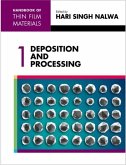Since 1992, when Ohring's Materials Science of Thin Films: Deposition and Structure was published as the first true textbook on thin films, the field has expanded tremendously, especially with regard to technological applications. Intended for science and engineering students in advanced undergraduate or first-year graduate level courses on thin films as well as scientists and engineers who are entering the field or require an overview of thin films, the book provides the most comprehensive coverage of materials science and technology related to thin films and coatings of any book. The 3rd edition brings the book up-to-date with the most important advances made since the publication of the previous edition. All chapters have been fully revised and include new illustrations, examples and exercises.
Hinweis: Dieser Artikel kann nur an eine deutsche Lieferadresse ausgeliefert werden.
Hinweis: Dieser Artikel kann nur an eine deutsche Lieferadresse ausgeliefert werden.








